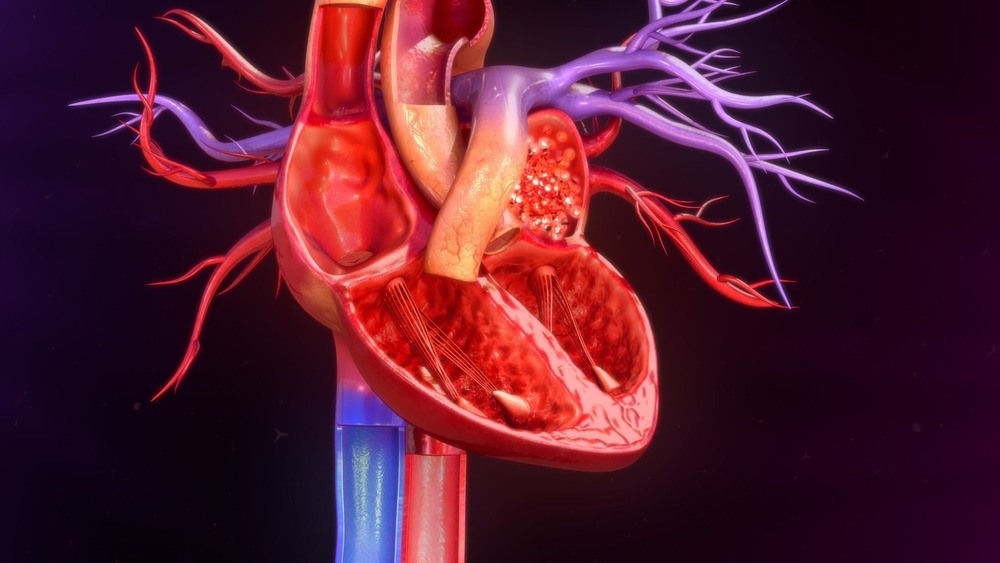Routine echocardiograms are used by a cutting-edge artificial intelligence (AI) algorithm to pinpoint aortic stenosis patients who are at high risk of passing away and could benefit from treatment. At today’s ESC Congress 2022, the late-breaking research is presented during a Hot Line session.

Image Credit: sciencepics/Shutterstock.com
The most frequent primary valve lesion requiring surgical or transcatheter intervention in Europe and North America is aortic stenosis.
Because of aging populations, prevalence is steadily rising. Due to the poor prognosis, guidelines strongly recommend early intervention in all symptomatic patients with severe aortic stenosis.
Aortic stenosis patients left untreated are likely to pass away within the first two years of experiencing symptoms. Peak velocity, mean pressure gradient, and aortic valve area are utilized in echocardiography to gauge severity. Aortic valve replacement should be considered for more individuals due to mounting evidence that heightened mortality risk transcends current diagnostic standards.
AI-ENHANCED AS investigated if a moderate-to-severe and severe aortic stenosis phenotype related to rising five-year mortality might be identified by an AI algorithm created using echocardiographic measures commonly utilized in clinical practice.
The National Echo Database of Australia (NEDA), which has more than 1,000,000 echocardiograms from more than 630,000 individuals and is connected to mortality data, was utilized for training the proprietary AI-Decision Support Algorithm (AI-DSA). Additionally, the algorithm was trained to find all cases of severe aortic stenosis as specified by the guidelines. 70% of the NEDA data, chosen randomly, were used for training.
The investigators compared five-year death rates in patients with moderate-to-severe and severe aortic stenosis phenotypes with five-year death rates in patients at low risk of severe aortic stenosis using the remaining 30% of NEDA data.
The AI-DSA found that out of 179,054 people, 2,606 (1.4%) had a moderate-to-severe phenotype and 4,622 (2.5%) had a severe phenotype. 3,566 (77.2%) of those with a severe phenotype satisfied the criteria for severe aortic stenosis.
Patients with a moderate-to-severe phenotype had a five-year mortality rate of 56.2%, while those with a severe phenotype had a five-year mortality rate of 67.9%. The five-year death rate for those without either trait (the reference group) was 22.9%.
For patients with the moderate-to-severe and severe phenotypes, respectively, the age- and sex-adjusted odds ratios (OR) for all-cause mortality were 1.82 (95% confidence interval [CI] 1.63-2.02) and 2.80 (9CI 2.57-3.06).
Within the AI-DSA-identified severe aortic stenosis phenotype (4,622; 2.5%), those who met current recommendations (77%) had five-year mortality of 69.1%. Mortality was 64.4% in the additional cohort that the AI-DSA recognized as having a severe phenotype but not meeting existing recommendations.
This proprietary AI algorithm picks up patients with a high risk (and all patients within current guidelines) of dying within five years that may be missed by conventional definitions. The findings suggest that the AI algorithm could be used in clinical practice to alert physicians to patients who should undergo further investigations to determine if they qualify for aortic valve replacement.
Geoffrey Strange, Principal Investigator and Professor, University of Notre Dame
Geoffrey Strange adds, “Given the rising prevalence of aortic stenosis and its impact on mortality, it is time to revisit the practice of watchful waiting and consider more proactive attempts to identify those at risk. More research is needed to determine if aortic valve replacement improves survival and quality of life in patients identified by the AI-DSA as having a high risk of mortality, but who do not meet current guideline definitions.”